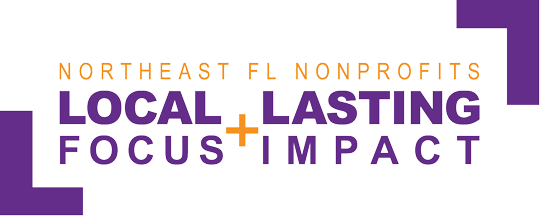Public Service Loan Forgiveness
What is Public Service Loan Forgiveness?

The Public Service Loan Forgiveness (PSLF) Program forgives the remaining balance on your Direct Loans after you have made 120 qualifying monthly payments (10 years) under a qualifying repayment plan while working full-time for a qualifying employer.
Eligibility
To qualify for PSLF, you must
- Be employed by a U.S. federal, state, local, or tribal government or not-for-profit organization (federal service includes U.S. military service);
- Work full-time for that agency or organization;
- Have Direct Loans (or consolidate other federal student loans into a Direct Loan);
- Repay your loans under an income-driven repayment plan*; and
- Make 120 qualifying payments (10 years)
Updates as of May 3, 2022
Under the new temporary rules, any prior period of repayment will count as a qualifying payment, regardless of loan program, repayment plan, or whether the payment was made in full or on time.
This change will apply to borrowers with Direct Loans, those who have already consolidated into the Direct Loan Program, and those who consolidate into the Direct Loan Program by Oct. 31, 2022
Updates as of March 7, 2022
Beginning in April 2022, those who were previously denied for the PSLF program will be eligible to be reconsidered. To learn more about this change visit here.
COVID - 19 Implications
Suspended Payments Count Toward PSLF and TEPSLF During the COVID-19 Administrative Forbearance
- If you have a Direct Loan and work full-time for a qualifying employer during the payment suspension (administrative forbearance), then you will receive credit toward PSLF or Temporary Expanded Public Service Loan Forgiveness (TEPSLF) for the period of suspension as though you made on-time monthly payments in the correct amount while on a qualifying repayment plan.
- To see these qualifying payments reflected in your account, you must submit a PSLF form certifying your employment for the same period of time as the suspension. Your count of qualifying payments toward PSLF is officially updated only when you update your employment certifications.
- Digital signatures from you or your employer must be hand-drawn (from a signature pad, mouse, finger, or by taking a picture of a signature drawn on a piece of paper that you then scan and embed on the signature line of the PSLF form) to be accepted. Typed signatures, even if made to mimic a hand-drawn signature, or security certificate-based signatures are not accepted.
- Note: In-grace, in-school, and certain deferment, forbearance, and bankruptcy statuses are not eligible for credit toward PSLF.
Qualifying Employers
Qualifying employment for the PSLF Program isn’t about the specific job that you do for your employer. Instead, it’s about who your employer is.
Employment with the following types of organizations qualifies for PSLF:
- Government organizations at any level (U.S. federal, state, local, or tribal) – this includes the U.S. military
- Not-for-profit organizations that are tax-exempt under Section 501(c)(3) of the Internal Revenue Code
- Serving as a full-time AmeriCorps or Peace Corps volunteer also counts as qualifying employment for the PSLF Program.
- The following types of employers do not qualify for PSLF:
- Labor unions
- Partisan political organizations
- For-profit organizations, including for-profit government contractors
Contractors:
You must be directly employed by a qualifying employer for your employment to count toward PSLF. If you’re employed by an organization that is doing work under a contract with a qualifying employer, it is your employer’s status—not the status of the organization that your employer has a contract with—that determines whether your employment qualifies for PSLF. For example, if you’re employed by a for-profit contractor that is doing work for a qualifying employer, your employment does not count toward PSLF.
Other types of not-for-profit organizations:
If you work for a not-for-profit organization that is not tax-exempt under Section 501(c)(3) of the Internal Revenue Code, it can still be considered a qualifying employer if it provides certain types of qualifying public services.
Eligible Loans
- Any loan received under the William D. Ford Federal Direct Loan (Direct Loan) Program qualifies for PSLF.
- Loans from these federal student loan programs don't qualify for PSLF: the Federal Family Education Loan (FFEL) Program and the Federal Perkins Loan (Perkins Loan) Program. However, they may become eligible if you consolidate them into a Direct Consolidation Loan.
- Student loans from private lenders do not qualify for PSLF.
- Under normal PSLF Program rules, if you consolidate your loans, only qualifying payments that you make on the new Direct Consolidation Loan can be counted toward the 120 payments required for PSLF. Any payments you made on the loans before you consolidated them don’t count. However, if you consolidate these loans into a Direct Loan before October 31, 2022, you may be able to receive qualifying credit for payments made on those loans through the limited PSLF waiver. Learn more.
Qualifying Payments
A qualifying monthly payment is a payment that you make
after Oct. 1, 2007;
- under a qualifying repayment plan;
- for the full amount due as shown on your bill;
- no later than 15 days after your due date; and
- while you are employed full-time by a qualifying employer.
You can make qualifying monthly payments only during periods when you’re required to make a payment. Therefore, you can’t make a qualifying monthly payment while your loans are in
- an in-school status,
- the grace period,
- a deferment, or
- a forbearance.
If you want to make qualifying payments, but you’re in a deferment or forbearance, contact your federal student loan servicer to waive the deferment or forbearance. However, you can still receive credit toward PSLF during the COVID-19 national emergency administrative forbearance period, which extends from March 13, 2020 through January 31, 2022.
Your 120 qualifying monthly payments don’t need to be consecutive. For example, if you have a period of employment with a nonqualifying employer, you will not lose credit for prior qualifying payments you made.
The best way to ensure that you are making on-time, complete payments is to sign up for automatic debit with your loan servicer.
How to Submit a PSLF Form
Send the completed form, with your employer’s certification, to FedLoan Servicing, the U.S. Department of Education’s federal loan servicer for the PSLF Program. You may mail the form to this address:
U.S. Department of Education
FedLoan Servicing
P.O. Box 69184
Harrisburg, PA 17106-9184
You may also fax your PSLF form to 717-720-1628.
If FedLoan Servicing is already your servicer, you may upload your PSL
Contact for PSLF Questions
If you have more questions, review the “PSLF FAQ” page.
If your questions aren't covered on that page, contact FedLoan Servicing at 1-855-265-4038




